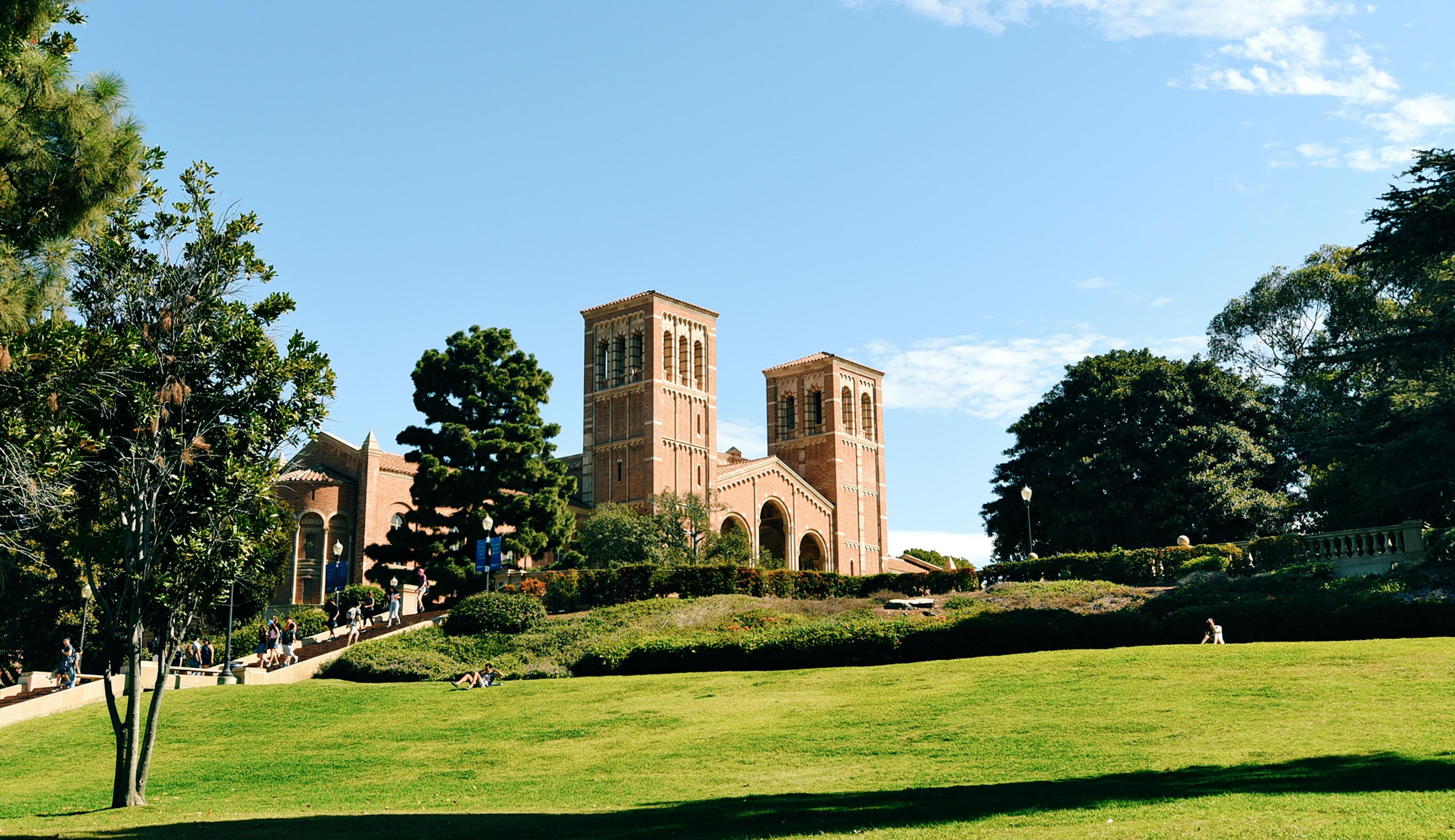
Table of Contents
If you're looking to attend the prestigious University of California, Los Angeles (UCLA), then you're already familiar with the high level of competition for acceptance. The UCLA acceptance rate is the topic of much discussion, with many prospective students poring over figures and statistics to calculate their chances of being admitted. In this article, we'll decode the UCLA acceptance rate blitz and shed some light on how you can successfully navigate the admissions process to secure your spot at UCLA.
Understanding the UCLA Acceptance Rate: A Brief Overview
The UCLA acceptance rate refers to the percentage of applicants who are offered admission to the university. Each year, thousands of high school students, transfer students, and international students apply to UCLA with hopes of being accepted into one of the country's top-ranking universities. With only a limited number of spots available, the competition for acceptance is fierce - in recent years, the acceptance rate has hovered around 14%.
However, it's important to note that the acceptance rate can vary depending on the specific program or major that a student is applying to. For example, some of the more competitive majors, such as engineering or computer science, may have a lower acceptance rate than other majors within the university.
Additionally, the UCLA acceptance rate is not the only factor that determines a student's chances of being admitted. Admissions officers also consider factors such as GPA, test scores, extracurricular activities, and essays when making their decisions. Therefore, it's important for students to focus on building a strong overall application, rather than solely fixating on the acceptance rate.
The History and Evolution of the UCLA Admissions Process
The UCLA admissions process has undergone many changes over the years. In the early days of the university, admissions decisions were largely based on academic achievement and test scores. However, as the number of applicants increased, the admissions process became more complex, with a greater emphasis being placed on extracurricular activities, personal statements, and essays. The admissions process at UCLA continues to evolve with each passing year, with a focus on finding students who will make a positive impact on the university community and beyond.
One major change in the UCLA admissions process occurred in the 1990s, when the university began considering a student's socioeconomic background as a factor in the admissions decision. This change was made in an effort to increase diversity on campus and provide opportunities for students from underrepresented communities. Today, the admissions process at UCLA takes a holistic approach, considering a range of factors including academic achievement, extracurricular activities, personal background, and life experiences. The goal is to create a diverse and dynamic student body that will contribute to the university's academic and social community.
The Impact of Demographics on UCLA Acceptance Rates
One factor that affects the UCLA acceptance rate is demographics. In recent years, the university has made a concerted effort to increase diversity on campus, resulting in a higher number of applicants from historically underrepresented groups. While this is a positive development, it also means that the competition for spots at UCLA is becoming even more competitive. It's important to keep this in mind when applying to the university and to make sure that your application stands out in other ways.
Another way that demographics impact UCLA acceptance rates is through the university's commitment to admitting students from all over the world. International students bring a unique perspective to campus and contribute to the diversity of the student body. However, the application process for international students can be more complex and competitive due to the limited number of spots available for non-US citizens.
Additionally, demographics can also play a role in the availability of financial aid and scholarships. UCLA offers a variety of financial aid options, including need-based aid and merit-based scholarships. However, certain groups may have more limited access to these resources due to systemic inequalities and disparities in access to education and financial resources. It's important for the university to continue to address these issues and work towards creating a more equitable system for all students.
How UCLA Evaluates Applicants: A Comprehensive Guide
So, what exactly does UCLA look for in its applicants? While there is no one-size-fits-all answer to this question, there are certain factors that the university takes into account when evaluating prospective students. These include academic achievement, extracurricular activities, personal statements, and essays, as well as standardized test scores. The university also considers factors such as community service, leadership potential, and special talents or abilities. To increase your chances of being accepted to UCLA, it's important to showcase your strengths and accomplishments in these areas.
The Role of Extracurricular Activities in UCLA Admissions Decisions
Extracurricular activities can play a major role in the UCLA admissions process. In addition to demonstrating that you are a well-rounded individual with a range of interests and talents, involvement in extracurricular activities can also help you stand out from other applicants. Whether it's participating in a sports team, volunteering in your community, or pursuing a creative passion, make sure to showcase your extracurricular achievements and experiences on your application.
The Importance of Essays and Personal Statements for UCLA Admissions
Essays and personal statements are another important aspect of the UCLA admissions process. These written pieces allow you to showcase your personality, values, and abilities in a way that your grades and test scores may not. It's important to take the time to craft well-written, thoughtful essays and personal statements that demonstrate your unique perspective and potential contributions to the UCLA community.
Standardized Testing and its Impact on UCLA Acceptance Rates
Standardized test scores, such as those from the SAT or ACT, are also a key factor in the UCLA admissions process. While the university does not have a minimum score requirement, high test scores can help to strengthen your application and increase your chances of being accepted. It's important to prepare thoroughly for these exams and to take them seriously, as they can have a major impact on your admissions prospects.
How to Increase Your Chances of Getting Accepted to UCLA
If you're hoping to gain admission to UCLA, there are a few things you can do to increase your chances of success. First, make sure to focus on your academic achievements and to take challenging courses that demonstrate your potential for success at the university level. Second, get involved in extracurricular activities that align with your interests and passions. Finally, take the time to carefully craft your essays and personal statements, emphasizing your unique perspective and potential contributions to the UCLA community.
Exploring the Factors that Contribute to a Competitive Application
In order to create a truly competitive application for UCLA, it's important to pay attention to all aspects of the admissions process. This means emphasizing your strengths and achievements in all areas, from your academic record and standardized test scores to your extracurricular accomplishments and personal qualities. By giving equal attention to all of these factors, you can position yourself as a top candidate for admission to UCLA.
Navigating the Waitlist: Tips for Applicants Who Didn't Get an Immediate Acceptance
Even if you don't receive an immediate acceptance to UCLA, there is still hope. Many students are placed on the waitlist each year, and there is still a chance that you could be offered admission at a later date. While you wait, it's important to stay positive and continue to pursue your academic and extracurricular interests. You can also consider reaching out to the admissions office for additional information or guidance.
Understanding the Transfer Process at UCLA: An Overview
If you're not a high school student but are still interested in attending UCLA, then the transfer process may be right for you. The admissions process for transfer students is slightly different than for incoming freshmen, with a greater emphasis being placed on your academic record at your previous institution. To increase your chances of being accepted as a transfer student, make sure to focus on your academic achievements and to carefully research the transfer requirements and application process.
Comparing the Acceptance Rates of Different Majors at UCLA
Another factor that can impact your chances of being accepted to UCLA is your chosen major. Some majors, such as engineering and pre-med, tend to be more competitive than others, with a lower acceptance rate. If you're considering a highly competitive major, make sure to showcase your strengths in all areas, including your academic record and extracurricular activities.
Analyzing Trends in UCLA Acceptance Rates Over Time
The UCLA acceptance rate has fluctuated over the years, with some years seeing a higher or lower percentage of applicants being accepted. By analyzing trends in acceptance rates over time, you can gain a better understanding of what factors may be contributing to these fluctuations. However, it's important to keep in mind that admissions processes can change from year to year, so it's important to focus on your own strengths and achievements rather than limiting yourself based on past acceptance rates.
Conclusion: Making Sense of the Numbers Behind the UCLA Acceptance Rate Blitz
In conclusion, the UCLA acceptance rate is an important metric for prospective students to consider. While the competition for admission can be intense, there are many factors that can contribute to a successful application, from academic achievement and extracurricular activities to personal statements and essays. By focusing on your unique strengths and accomplishments, you can position yourself as a top candidate for admission to UCLA and secure your place as a part of this prestigious university community.












